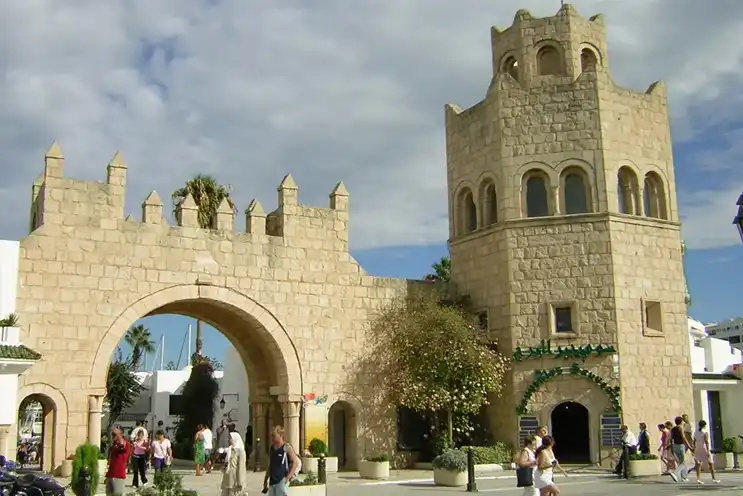The Medina of Sousse, known as the Pearl of the Sahel, lies within the vibrant city of Sousse, a dynamic Tunisian hub boasting rich heritage, craftsmanship, stunning beaches, and grand hotels. Immerse yourself in the essence of Sousse by embarking on a journey through its heart – the cherished medina, steeped in history. Recognized as a UNESCO World Heritage Site since 1988, the medina embraces complete ramparts, a splendid casbah, vibrant souks, and a rich tapestry of heritage, beckoning explorers to uncover its treasures..
A Glimpse into History
Nestled along the Tunisian Sahel, the Medina of Sousse forms a harmonious archaeological marvel, reflecting the application of Arabo-Muslim urbanism to a coastal town that endured the perils of piracy and maritime threats. Paired with the Medina of Monastir, it represents a singular archetype of early Islamic military coastal architecture that has persevered through the ages. The medina stands adorned with monuments showcasing robust and imposing architecture, including the Ribat, the Grand Mosque, the Bou Ftata Mosque, the Kasbah, and the encircling ramparts. A striking example, the Ribat stands as both a fortress and a spiritual sanctuary, embodying the era’s architectural prowess.
A Precious Heritage Under Threat
Within the Medina’s labyrinthine alleys and winding paths, dwellings are clustered into quarters, reflecting a layout swiftly fading under the pressures of modernity and evolving architectural techniques. Unique monuments hailing from the Aghlabid and Fatimid periods grace the Medina, allowing insights into the evolution of Islamic art during its infancy.
Embracing UNESCO’s Criteria
Criterion (iii): The Medina of Sousse, with its Ribat, Kasbah, ramparts, Bou Ftata Mosque, and Grand Mosque, serves as an exceptional testament to the civilization of the early Hegira centuries. Its meticulously designed layout features both a meridian and an east-west axis, forming an illuminating illustration of an Islamic city.
Criterion (iv): The Ribat of Sousse, the most ancient and remarkably preserved among them all, epitomizes this construction style. Its rectangular enclosure, fortified with towers and turrets, showcases an inner courtyard rising over two levels, featuring thirty-five cells. The minaret-watchtower hybrid on the south-east side further enhances its distinctiveness.
Criterion (v): Reflecting Arabo-Muslim and Mediterranean architectural marvels, the Medina of Sousse encapsulates a unique way of life. This architectural typology, now vulnerable due to socio-economic shifts and modernization, embodies a cherished heritage that calls for preservation.
A Journey Through Time
The city’s history traces back to the Phoenicians, followed by Carthaginians and Romans who flourished with bustling port activities. Vandals and Byzantines alternated control, leading to the Arab conquest by Oqba Ibn Nafi Al Fihri in 670. Named Hadramout, the city eventually became Sousse, a testament to its enduring prominence. Monuments that stand today, such as the Ribat, Great Mosque, and Kasbah, were constructed between 700 and 900, as Sousse’s significance endured through its vital port and agricultural exports.
Embrace the storied past of the Medina of Sousse, an open book that reveals the tapestry of Tunisia’s history, architecture, and way of life.

Comment (0)